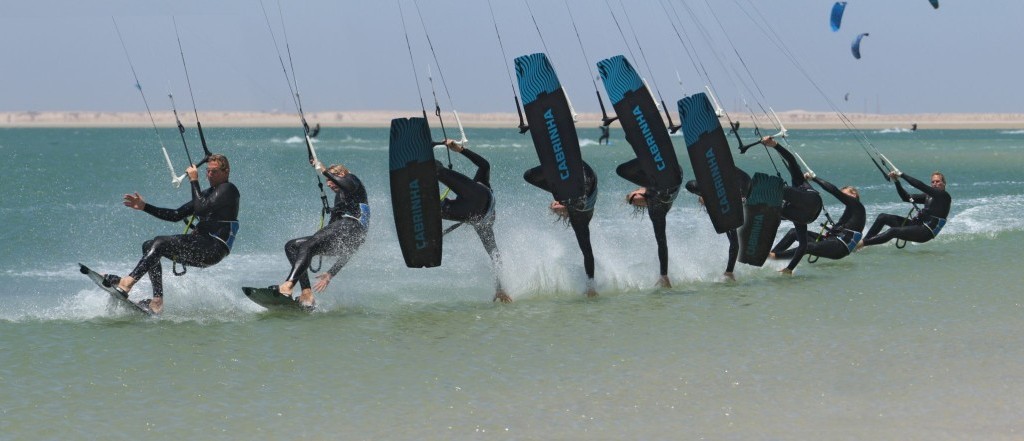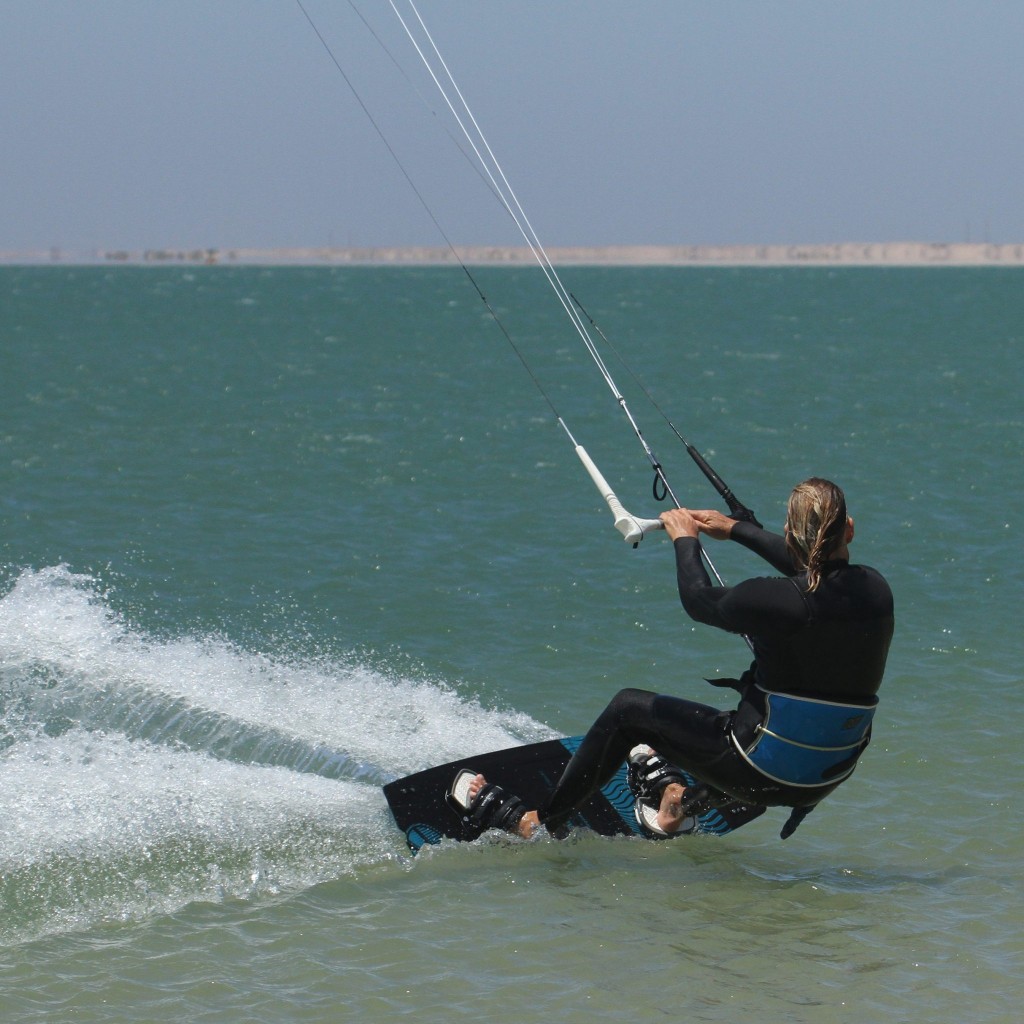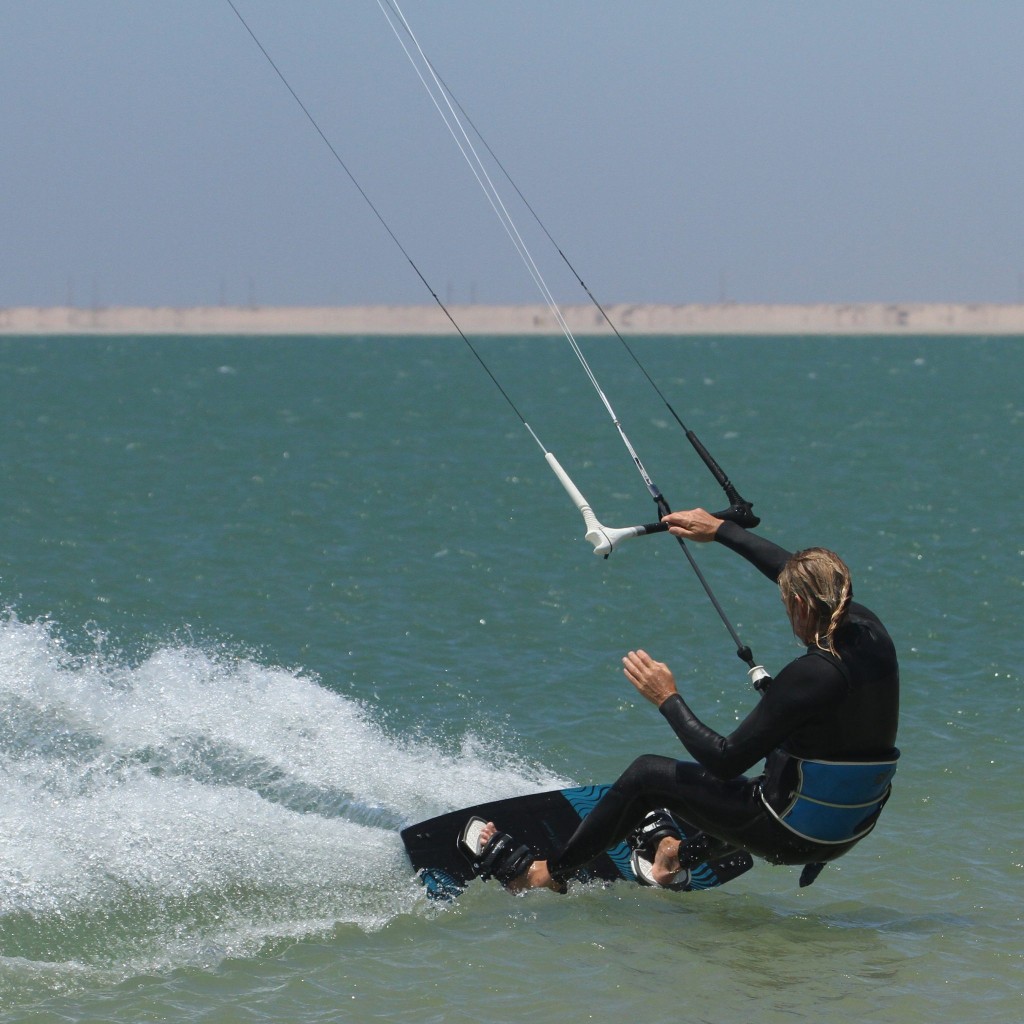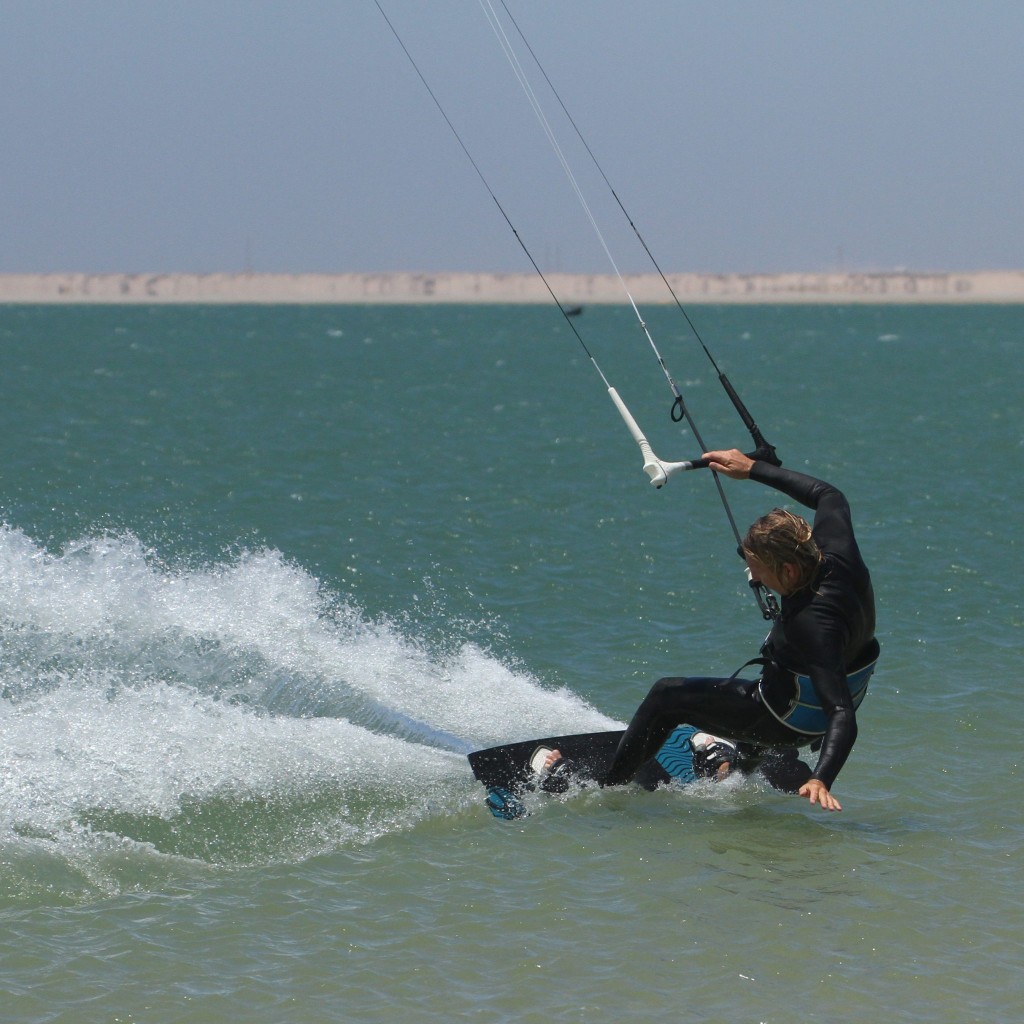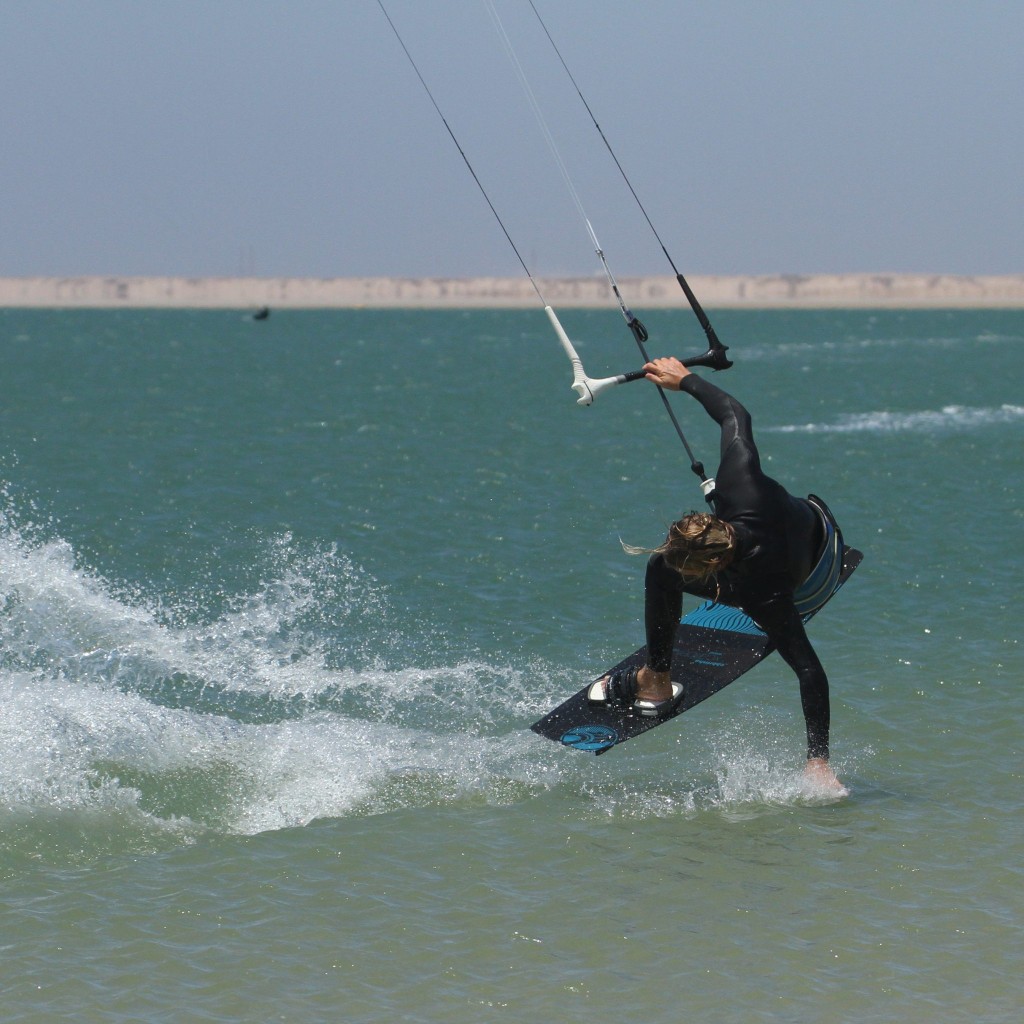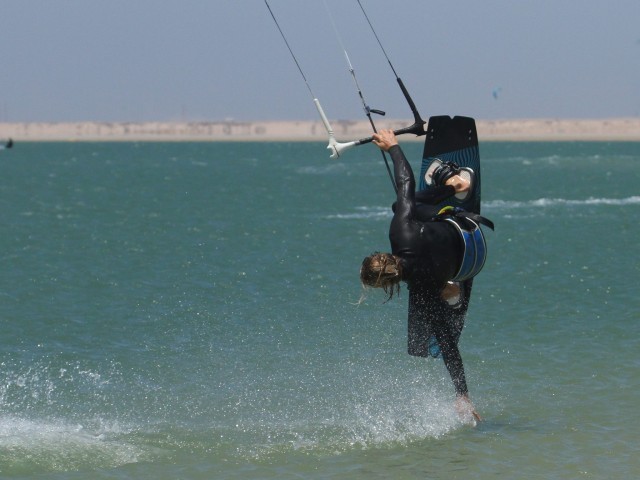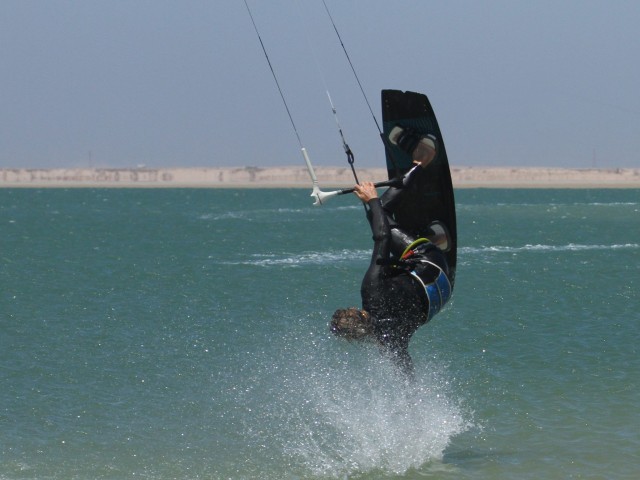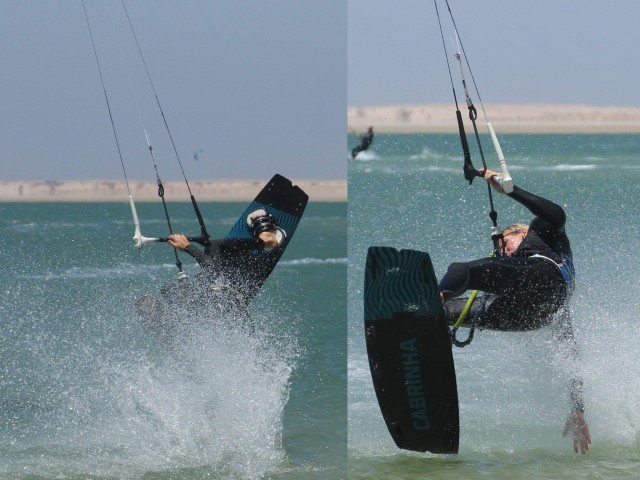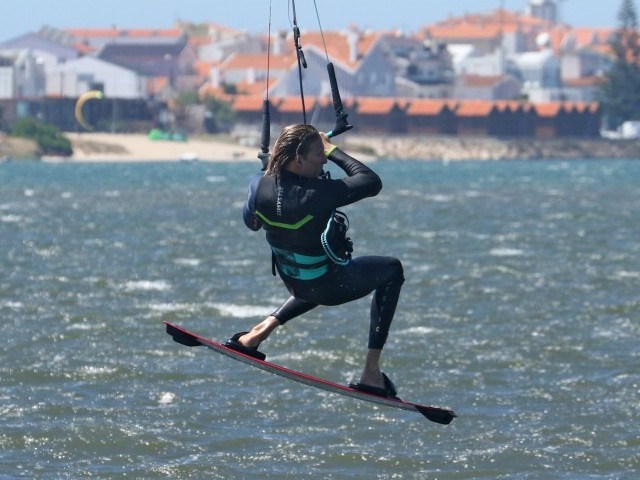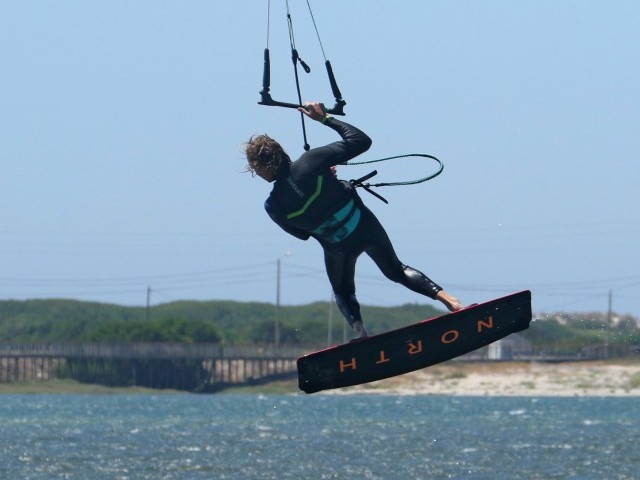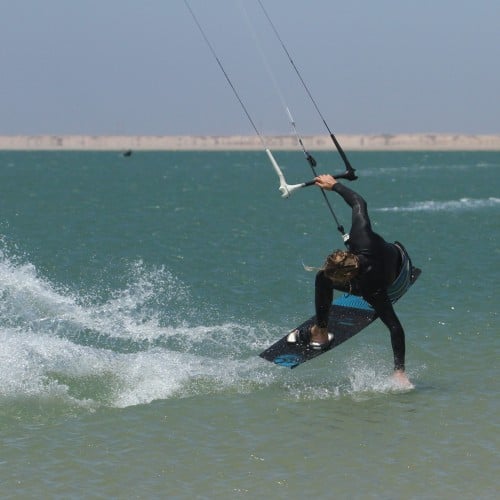
Hand Wash
Technique / Intermediate
Introduction
Oddly enough it’s possible that you already know how to back roll hand wash, maybe even front roll hand wash, but chances are you’ve not even considered a simple, no frills approach to the cleanest of moves. This seems to be a popular photo choice at the moment, and as there’s nothing more in than being en mode, lets get this party started.
Great news is that you don’t need any hand washing experience to drag out one of these. A modicum of kite control and you’re there. The real beauty of the hand wash per say is that compared to the more traditional transition attempts that often end in a kite loop, you are actually washing your back hand. This means no startling power if you get it wrong, just a gentle dunking. So what is it? The hand wash is a support move, which requires you to drop your back hand off the bar whilst sailing along, so that you can stroke the water, whilst simultaneously rocking your board up in front of you, resulting in a moment of pure showman/womanship as you casually cruise along on your hand before gently placing the board back down. Sounds easy enough....
Approach Pic A.
As for all support moves there are two absolute necessaries here, lift in the kite and tension on the lines. Admittedly with tension you’ll have some lift, but trying to learn this in subpar conditions when you’re a tad under will make life unnecessarily hard. Now assuming that you have plenty of beans in the kite, make sure you have a good solid upwind edge to put plenty of tension in your lines. This way you’ll be able to feel the kite and know when it’s time to go. Whilst on your edge with you kite at either 1 or 11 o’clock move your hips back. This will lower your bum and place you nearer to the water. With your posterior close to the drink, you’ll need to break at the waist to keep your bar on the sweet spot, which you’ll want relatively far away. Hence the need for power. In the photo you can see that Christian has his weight low, his hips back on the board, back leg quite bent, but still with a good edge and he’s cranking upwind. One last tip, which you can’t quite see yet, is that Christian has his front hand centred on the bar. If you can split your two fingers around the centre line, otherwise butt your front hand right up against it.
The Drift Pic B.
The aim with the kite is to get it back past 12 o’clock so that it will help you lift the board, help lift you and give you time to drag and wash your hand before it moves forwards again. The amount of lift, and time you have with lift, will depend on how powered you are, kite size and subtlety of kite movements. If you move the kite with enthusiasm, then it’ll lift you as per a jump. If you move it with extra caution, you’ll have no lift. Somewhere in between, a fast drifting action, or a slow send, which gets the kite moving without generating heaps of power is the goal. Whilst drifting the kite back concentrate on keeping your edge. You’ll also need to feather the bar out, maintaining tension but controlling lift. Once the kite is moving, release your back hand in anticipation of the wash. Here Christian has drifted the kite back, steering with both hands before releasing his back hand. You can see that he’s pushed the bar out to counter the lift from the kite as it drifts over the top but he’s still edging hard.
The Hand Pic C.
Now that the kite is sorted, it’s time to prepare for the wash. Three things to dial this in, your back hand, shoulders and head. You want to reach back with your hand, whilst leaning your shoulders back towards the tail of the board and focusing your eyes there, tilting your head towards your back shoulder as if you were emptying water out of your trailing ear. Christian is leaning his shoulders back, arm extended behind him and he’s looking at the tail of his board. As he does this he’s still bent at the waist, but he’s pulled the bar back in to stop the kite moving any further back, just past 12 is fine...
The Board Pic D.
As soon as you stop the kite from travelling any further back it’s all about getting the board up off the water. The wonderful thing here is that as long as you get the drift right and hold your edge it’s really not that hard as the kite is actually helping you. With the kite back past 12 o’clock, all you need to do is pull a little on the bar for some support, and bring your knees up to raise the board off the water. With the kite behind you, it effectively pulls you back slightly! Just to throw a spanner in the works you will need to multi task somewhat as you still need to get the hand down into the water. Do this by reaching back and down, allowing your head and shoulders to roll even further down towards the water. If you compare this photo with the previous one you can see that the only difference is that Christian has really rolled his shoulders so that they’re almost perpendicular to the water, and he’s lifted his knees up to bring the board off the water.
Rock It Pic E.
From now on the move actually helps itself. As long as you try to keep your hand down near the water, dragging it and washing it to your heart’s content, this will continue to roll your shoulders back further. With your harness hook acting as the fulcrum point, this will rock your board up in front of you. The only tricky bit is that you need to be sensitive to the bar. You need to keep enough power on to hold you up and lift you back, but too much and your caressing hand will be lifted clear off the water, whilst too little and you’ll already be dropping your hips back down, which will mean that contact with water is imminent. Here Christian’s board and shoulders are perpendicular to the water, pointing skywards, the kite having pulled him back into this position, no strength or core work required:) From here on your hand should be dragging in the water, with a plume of spray following you like a demented Marlin.
The Tweak Pic F.
Now for the money shot! As you get comfortable with the kite movement and getting some decent wash action, it’s time to get the board a bit higher and invert yourself a tad more. The mechanics are all the same, you just need to be more dynamic and aggressive with rocking yourself back with your head and shoulders. As long as the kite is supporting you, the harder you roll you head and shoulders, the higher the board will go. Once it’s up there you’ll need to keep the bar in for maximum effect and the full eco cycle. You can see in the picture that Christian has the bar pulled in to the sweet spot, but he’s not pulling on one side and therefore not steering the kite forwards. The more inverted you go, the easier it is to pull the bar down and in without overly steering the kite – win, win.
Stomp It Pic G.
Like all good things, your hand wash must come to an end. Even if you keep the bar in, and the kite moves leisurely forwards, at some point you’ll feel the lift going and the gravity defying weightlessness disappearing. This is your queue to get your feet back down and add some oomph into the kite so that you can kite away with a grin rather than sink unceremoniously into the sea. As you feel yourself lowering, pull hard on the front hand to steer the kite forwards, so that it can pull you out. As it goes overhead, raise your own head and look forwards, pulling in on the bar for support. Before you know it, you’ll be fulcruming back the other way, head and shoulders rolling up, whilst your board rocks down. As long as the kite is diving it’ll pull you, and as long as you get the board’s tail down, you’ll stomp it. From behind you don’t see a great deal due the desirable hand spray, but the image from in front shows how Christian is pulling in on the bar, lifting his head and dropping the tail of the board back onto the water. Keep your knees bent though, as you won’t have much space to place the board down.
Top Tips
If you can, use a larger kite. It will give you more lift and more time to think. Even if you’re powered, learning this on a 7m will be a tad more challenging, though not impossible.
Flat water will make it much easier to hold your speed coming into this whilst edging hard. Not a must but a welcome helping hand.
As with all moves, concentrate on the separate parts, not the claim. If you can learn to have the kite right and get the hand washing, the rest will come soon enough.
Now have a scan through the sequence and a look at the videos for the complete A – Z!
Common Problems
If you’re getting off the water but your hand isn’t wet! Two possible reasons. Firstly, you could be moving the kite back too quickly and therefore you’re doing a mini jump. Try drifting the kite a tad slower. It could also be due to the fact that you’re not letting the bar out as you drift the kite, so remember to feather the bar out so that the kite doesn’t lift you until you choose.
You’re dragging and washing but you can’t sail away. This is likely caused by the fact that you’re too low to the water, so try to keep the bar in on the sweet spot as you rock and roll in the wash. Also remember that you need to pull on the front hand to exit as soon as you feel the lift going.
Keystones
- Solid edge, weight back
- Drift kite, stay low
- Reach Back, roll head and shoulders
- Bar in and rock board up
- Pull in front hand and drop tail
This technique article was in Issue 75 of IKSURFMAG.
Related
By Christian and Karine
Christian and Karine have been working together as a coaching team, running improver to advanced kitesurfing clinics since 2003.






